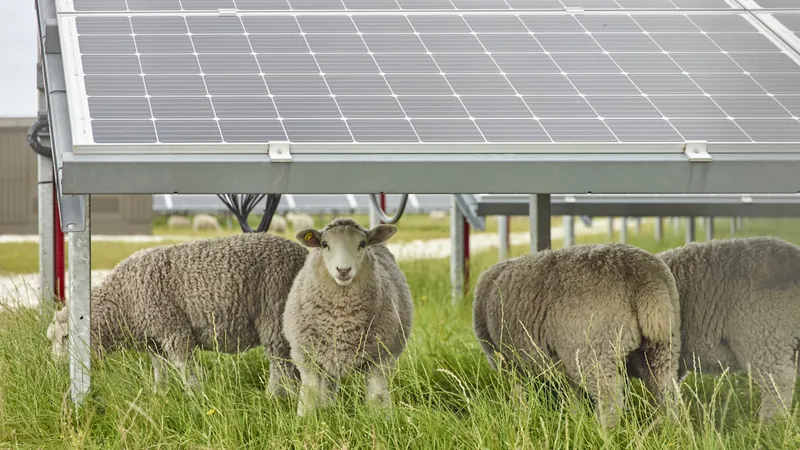
Shocking New Study Reveals Surprising Benefits of Sheep Grazing Under Solar Panels — A Game Changer for Sustainable Agriculture!
2025-01-01
Author: William
Introduction
In an age where clean and renewable energy is making headlines, the integration of solar power into traditional farming practices is sparking a revolutionary change in agriculture. The rise of solar energy is expected to replace conventional fossil fuels, but a pressing concern has emerged: what to do with the vast land that solar arrays occupy? Enter agrivoltaics, a groundbreaking practice that merges solar energy production with agricultural activities, optimizing land use while promoting sustainability.
The Study
A fascinating study from New South Wales, Australia, conducted by renewable energy developer Lightsource bp, in collaboration with EMM Consulting and Elders Rural Services, sheds light on this innovative approach. Over the past three years, a flock of approximately 1,700 Merino sheep has been grazing beneath solar panels at the Wellington project, and the results are astonishing.
Findings
The research indicates that the wool quality produced by these sheep is on par with, or even superior to, wool from sheep grazing in open pastures. Lightsource bp stated, "The findings suggest that the co-location of solar farming with sheep grazing does not negatively impact wool production, even for those adhering to the highest quality standards." But there’s more: the farmer overseeing this operation reported a significant increase in wool quality due to the varied grazing conditions provided by their unique environment.
Farmer Insights
"Our wool quality has increased dramatically, primarily because of the variable weather that allows our sheep to alternate between lush feed and dried grass. This fluctuation encourages breaks in wool production, leading to stronger fibers," he shared.
Global Implications
The success of this project paves the way for broader adoption of agrivoltaics across the globe. In Spain, similar initiatives have successfully interspersed solar panels with olive trees, while other studies have highlighted enhanced growth in crops like maize, Swiss chard, and beans when cultivated under the shaded protection of solar arrays.
Conclusion
This new research not only illustrates the potential for sheep grazing to thrive in a solar-powered environment but also raises an exciting prospect for the future of sustainable farming. As more developers and farmers explore these collaborations, we may see an agricultural revolution that not only increases food production but also contributes to our energy goals.
With advances in agrivoltaics, it seems the future looks bright for farmers, sheep, and the planet alike! Stay tuned for more updates as this story develops. You won’t want to miss what’s coming next in the world of sustainable agriculture!



 Brasil (PT)
Brasil (PT)
 Canada (EN)
Canada (EN)
 Chile (ES)
Chile (ES)
 Česko (CS)
Česko (CS)
 대한민국 (KO)
대한민국 (KO)
 España (ES)
España (ES)
 France (FR)
France (FR)
 Hong Kong (EN)
Hong Kong (EN)
 Italia (IT)
Italia (IT)
 日本 (JA)
日本 (JA)
 Magyarország (HU)
Magyarország (HU)
 Norge (NO)
Norge (NO)
 Polska (PL)
Polska (PL)
 Schweiz (DE)
Schweiz (DE)
 Singapore (EN)
Singapore (EN)
 Sverige (SV)
Sverige (SV)
 Suomi (FI)
Suomi (FI)
 Türkiye (TR)
Türkiye (TR)
 الإمارات العربية المتحدة (AR)
الإمارات العربية المتحدة (AR)